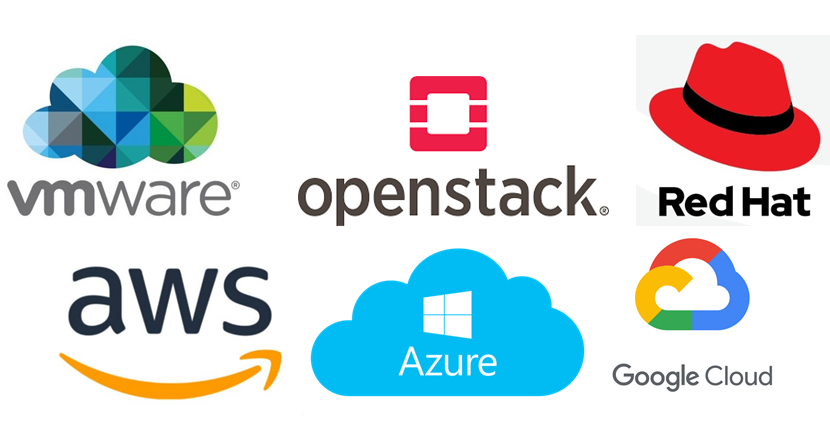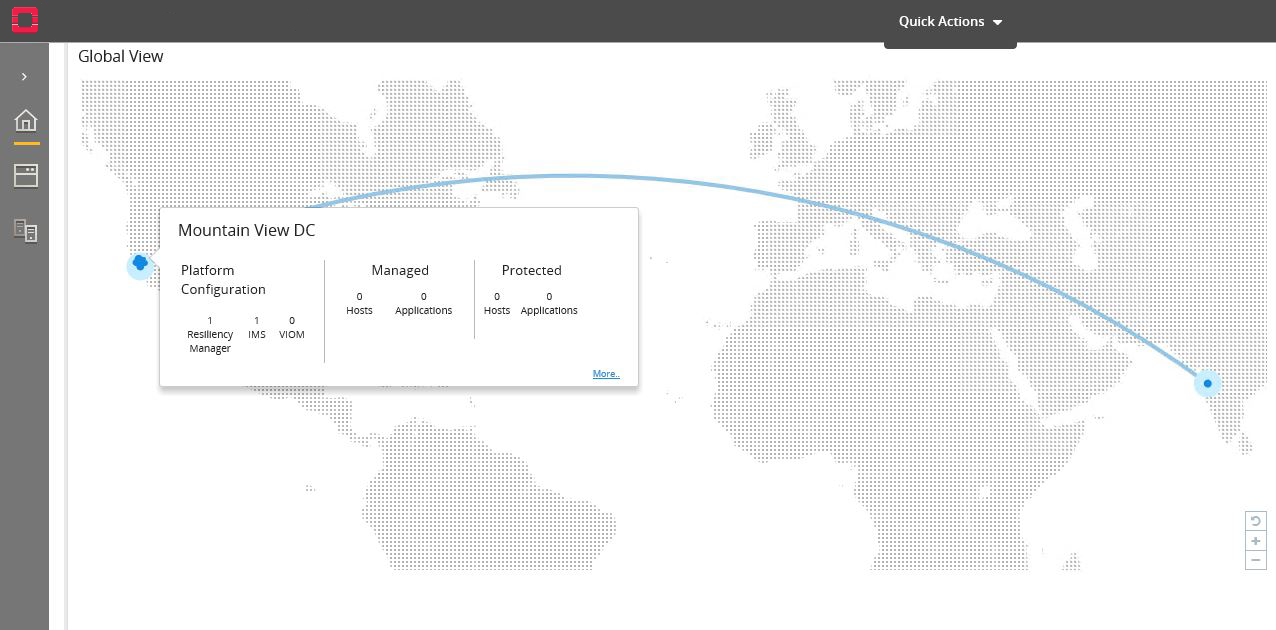
Multicloud strategy
Your cloud strategy is multicloud if you aim to combine the best of more than one cloud service, from more than one cloud vendor, public or private. This strategy helps you avoid the pitfalls of single vendor reliance. Spreading workloads across multiple cloud vendors gives you flexibility to use (or stop using) a cloud whenever you want.
There's nothing evil about having multiple clouds, in fact, it’s a good thing.
As with so much in live, in cloud as well: there’s no 1 perfect solution
You might find the perfect cloud solution for a certain part of your enterprise. For example a proprietary cloud, finetuned for hosting legacy applications, an affordable cloud perfect for archiving public records, a cloud that scales broadly for hosting systems or a cloud ideal for developers. But no single cloud can do everything. Or, rather, no single cloud can do everything perfectly at the same time.
It can even be important
Benefits, such as avoiding vendor lock-in, cost savings, performance optimization, a lowered risk of DDoS attacks, as well as improved reliability, are all critical as businesses are moving forward in today’s new digital economy.
No cloud lock-in
Perhaps the most attractive benefit from preventing vendor lock-in is that leverage shifts back from huge impersonal public cloud providers to you as a customer. While still enabling you to compete in today’s increasingly digital economy heavily with the ability to run workloads within the most appropriate environments, whether the goal is to take advantage of cost savings, disrupt with innovative technologies or capitalize on performance optimization opportunities.
Evade DDoS attacks
As cloud deployments have grown, so too has the possibility of DDoS attacks not only taking a site down, but ultimately keeping it down. However, a well crafted multicloud architecture helps lessen the effectiveness of DDoS attacks by providing a level of resiliency not available with a single provider. If a cloud provider suffers an attack, this strategy lets IT instantly shift the load or only the impacted services to other cloud environments.
Cloud Failover
A multicloud strategy can also improve reliability. Specifically, with multicloud an otherwise passive cloud can seamlessly serve as the failover solution when the primary cloud has issues processing a requested service. And once the primary cloud is back to its normal function, the operations can automatically revert.
Each benefit associated with a multicloud approach can prove instrumental in establishing or maintaining a competitive advantage in today’s digital economy. Of course, realizing these benefits requires a solid strategy to map out opportunities as well as access to a well crafted cloud management tool.
It’s possible to manage a multicloud environment manually using multiple management tools, redundant policy implementations, and extra people to work the gears and levers. On the other hand, cloud management tools are purpose built to provide unified management and operations for hybrid multicloud environments.
MultiCloud business cases
So now I hear you think; “How could I use multicloud at my infrastructure at this moment, without knocking on the CTO’s door, asking for more money and recourses for improving reliability without having a proper business case”.
The trick is to start small, and instantly create a way to improve your IT infrastructure, and if possible start saving money from day 1. Have a look at your applications and make use of the best features that different clouds have to offer for you applications.
MultiCloud resiliency plan
Multicloud environments help protect you from outages. As a failover solution, multicloud allows you to have an available, highly scalable backup platform for data, workflows, and systems in case your primary cloud goes dark. You might have experience running a failover platform based on two fully licensed VMware and storage setups. Instead of investing in a second licensed VMware cluster, you could easily create resilience using a multicloud setup with for example a failover to public cloud platforms such as Amazon Web Services and Azure or private cloud platforms like Red Hat or OpenStack. You can even follow different costing strategies with one CAPEX and one OPEX solution, license free, less costly to manage or invoiced by processor and storage use, only when the actual failback occurs.
MultiCloud outbursting
Another way to gain from a multicloud strategy is by using cloud outbursting. So when the demand for computing capacity for your application spikes over available capacity of you private cloud, your application bursts into a public cloud. You only pay for actual extra compute resources when they are needed and stil are able to meet any demand. Ofcourse, you need to configure and test this model to rely on it.
MultiCloud Proximity
To reduce poor response times for cloud users thousands of miles away from a company’s headquarters, you can choose to host some workloads at regional cloud providers that operate closer to where the users are. This way you can maintain high availability and adhere to data sovereignty laws or protocols that subject data to the regulations of the country in which that data is located.
Any good plan includes a good escape route
An exit strategy needs to be part of the entry plan when signing up with any cloud provider. You don’t want to do business with a provider who won’t let you go easily or makes it prohibitively expensive with for example storage costs or other obstacles when it’s time to say goodbye. For a multicloud strategy to work, you need to be able to migrate your data easily and cheap.
Finding your own route
These days the challenge is not to maintain your infrastructure, it’s about what you run on top of it. Almost a cliché now, but no matter your industry, you’re expected to be reimagining your business to make sure you’re not the next local taxi company or hotel chain caught completely off guard by your equivalent of Uber or Airbnb. The question is not whether you will have to transfer your business, but how you will do this. One important way is to be responsive to your customers core needs and be agile in solving those for them.
So you might think you do not have experience, knowledge or budget to throw out all your existing infrastructure and fully embrace enterprise multicloud strategies. But that’s the beaty of a multi cloud strategy: you can start for example building a cloud outburst of fail-over platform for your current infrastructure with just a small secondary cloud. This will prepare you for you multi cloud strategy in that you need to research the possibilities, optimize performance for and multi cloud deployment of your applications, define multi cloud security policies etc. etc. If you choose you first multi cloud project wisely it will immediately add value to you organization as well, kickstarting your route to greater opportunities and indepence for your organization.


